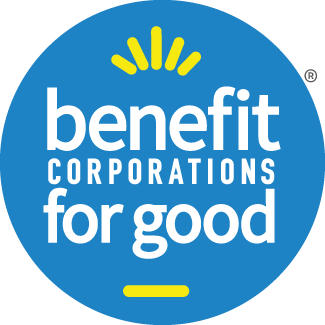How a Colorado Garden Products Company Thrives through Sustainable Practices
Designing a useful product is one thing. But designing a useful product that also lessens negative environment impact is quite another.
Enter Thriving Design gardening products. Sustainability is at the very heart of the business. And it’s been a key part in helping the company grow even through pandemic times.
As a registered and certified Benefit Corporation for Good, Thriving Design and its leaders Jason and Morgan Rider are committed so standing up for environmental and human rights. The brother and sister team is committed to minimizing packaging and waste and being carbon neutral. Putting their money where their beliefs are the company donates 1% of profits to nonprofits focused on conservation of the environment and food security for all people.
We wanted to learn more about this purpose-driven business. So we recently interviewed Morgan Rider about becoming a certified Oregon Benefit Company. Here’s what she had to say about it, the motivation for she and her brother doing it and why it’s helping Thriving Design grow in a very sustainable manner.
1. What motivated you to become a Benefit Company?
At Thriving Design, we don’t just mean business. We mean change for the betterment of people and the planet. That’s why we committed to becoming a Benefit Corporation for Good when we launched the company in May 2020. We use the United Nations’ framework for a sustainable future to define meaningful action in the categories that most align with what we do. What we can’t do within our business, we’ll achieve with our 1% for the Planet pledge to donate 1% of our revenue to nonprofits focused on environmental causes, including gardening.
2. Was it difficult getting internal support for moving toward this model?
No, Thriving Design is a family business. We incorporated the business as a Public Benefit Corporation in Colorado. Living sustainably is core to how we live our lives, the choices we make as consumers and citizens. So it’s only natural that we would prioritize sustainable business practices how we operate the company. Using our business as a force for good in the world has been important to us from the outset.
3. How long did it take you to officially become a Benefit Company?
Sustainability is in our DNA. The impact on the environment and our communities are considered with every decision we make - the time between incorporation and certification was less than a year, and mostly delayed by time we needed to carve out to answer the certification questions (which really was rigorous but not onerous!)
4. Have you seen any change in culture since you became a Benefit Company?
No. As a new company, our culture and values are defining principles of our brand. It’s who we’ve been since Day 1.
5. Have you experienced any positive outcomes since becoming a Benefit Company?
Many of our customers remarked positively to our announcement of BFGC certification and indicated it’s why they love not just using our products but supporting our business because of how we do business!
6. Would you recommend this business model to others? Why or why not?
Being a certified Benefit Corporation for Good validates our intentions which lead to actions. We think it’s important to put our money where our heart lies. If we’re going to take action to protect the livability of the Planet, every business should be committed to good environmental, social and governance framework and practices.
7. What is the most important trait to have as a conscientious leader of a Benefit Company?
The most important trait a conscientious leader of a Benefit Company should have is caring. It’s important to care for your employees, community and the planet. That’s really what motivates us. We really care about the future of the planet. I’ve always thought that it’s more important to have a caring economy rather than a sharing economy.
We recently had a customer send us a nasty message on-line about how disappointed he was in C-BITEs because they didn’t fit his garden stakes. We assumed (correctly) that he might not have been attaching them correctly. I responded with a helpful how-to and offer to refund his purchase if he wasn’t happy, and to send him a complementary Plant Support Kit. The next message from him was an apology, followed shortly thereafter with a purchase. So we also really care about the quality of our products, our brand reputation, and most importantly our customers.
8. What lessons have you learned in the process?
Certification is available and accessible for all businesses, be it a new, family run company like Thriving Design, to larger financial institutions to wineries and food and beverage companies. It’s something everyone should consider seeking.
9. Is being a Benefit Company part of your current brand message?
YES! Zero hunger. Peace, justice and strong institutions. Climate action. Sustainable development. These are our stakes in the ground. These are the cairns that will guide how our business grows, who we hire and work with and how we give back. As our roots deepen, we’ll raise our stakes and nurture our community for the benefit of all.
10. What is the single best reason you'd give for another company or peer to become a Benefit Company?
We love being a part of a community of like-minded people and organizations. We are helping build a union of forward-thinking companies aligned in their shared values of honesty, transparency and empathy.
You can learn more about Thriving Design here.
If you want to know more about why your business should become a benefit corporation, watch this.
Learn the 6 simple steps to becoming a benefit company or benefit corporation here.
~benefitcorporationsforgood.com~

